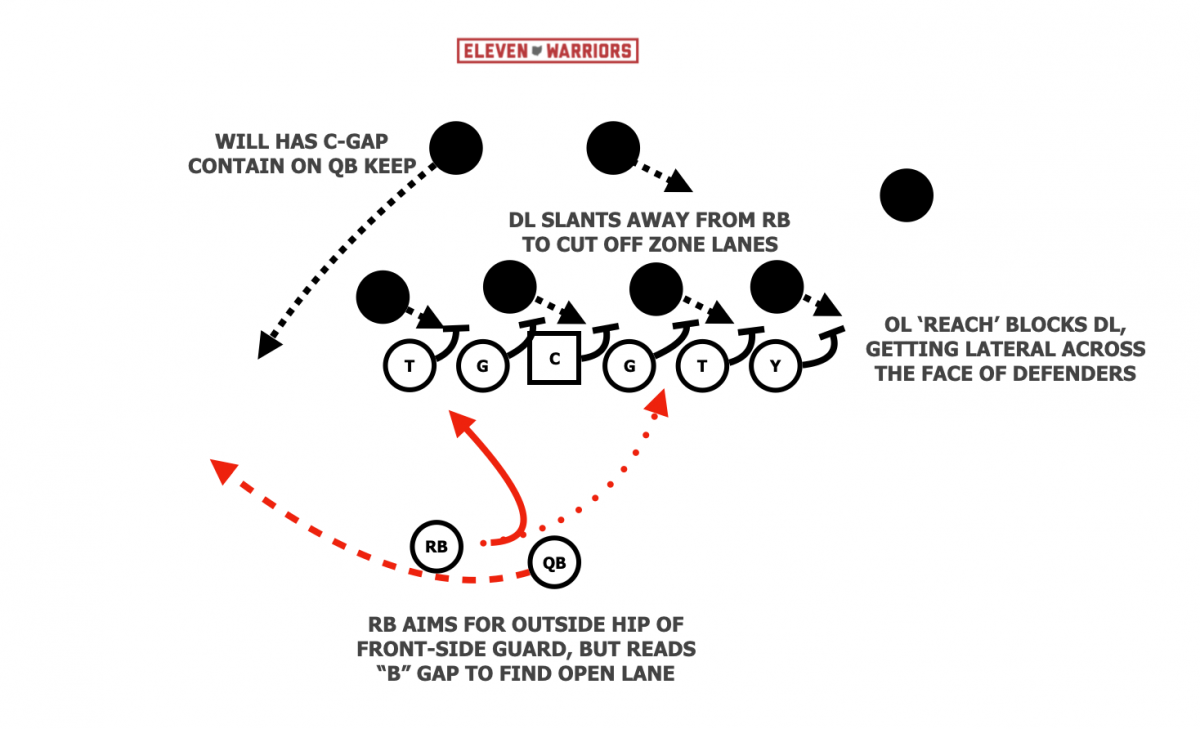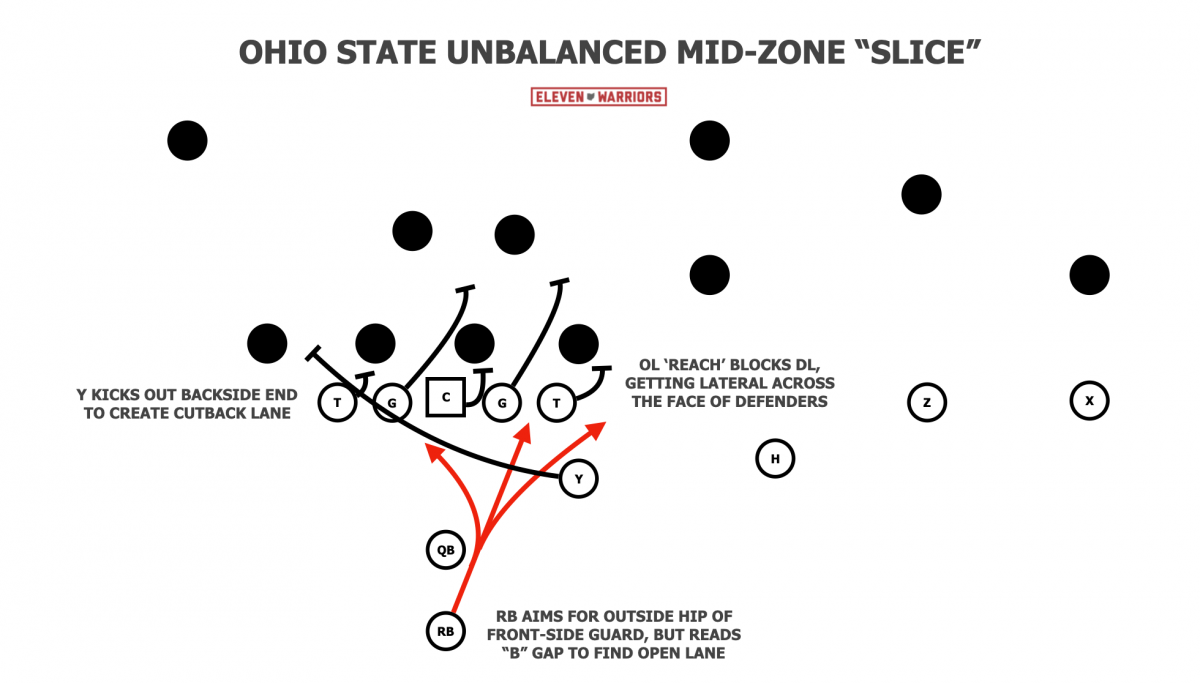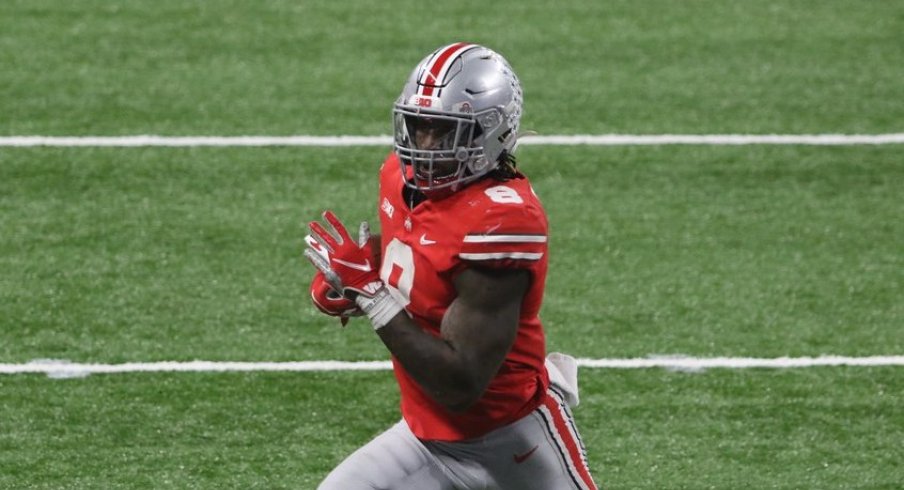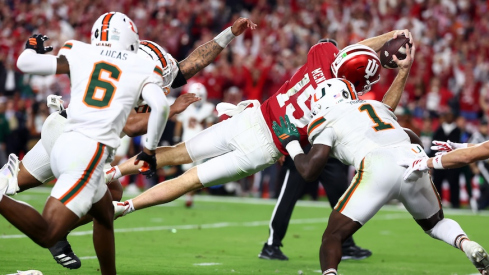"When you have a player that's in a rhythm like that, you just have to keep feeding him the ball, and that's what we did” - Justin Fields discussing Trey Sermon's performance in the Big Ten Championship Game
Despite what the forums may tell you: no, the sky is not falling on the Ohio State offense. Justin Fields has not regressed. Ryan Day has not forgotten how to call plays.
Instead, the true identity of this team emerged at the most critical time. Despite featuring the most talented quarterback in school history and a plethora of blue-chip wide receivers, the 2020 Ohio State Buckeyes win games in the trenches.
| Opponent | Rush Yds | Average YPC |
|---|---|---|
| Nebraska | 215 | 4.48 |
| Penn St | 208 | 4.62 |
| Rutgers | 203 | 5.49 |
| Indiana | 307 | 6.14 |
| Michigan St | 322 | 6.71 |
| Northwestern | 399 | 9.07 |
A stout front-seven, led by the stellar play of tackles Tommy Togiai and Haskell Garrett, carries the Buckeye defense, while their counterparts on the offensive side of the ball continue to get better and better each week. Through six games, the OSU running game has improved game by game, averaging more yards-per-carry than the contest prior and head into the College Football Playoff with the top rushing offense of any Power-5 team.
Never has this been more apparent than last Saturday in Indianapolis as Trey Sermon broke Eddie George's school record for rushing yards in a single game with 331 yards. As a team, the Buckeyes racked up 399 yards in Lucas Oil Stadium, the most surrendered by Pat Fitzgerald's disciplined defense in over a decade.
Throughout much of the first half, however, little seemed to go right for Day and his offense. The traditionally conservative Northwestern defense switched up coverages far more than expected, making Fields hesitate in the pocket.
When the Buckeyes tried to run early, the Wildcats often countered by slanting in the direction opposite the running back, expecting him to accept the handoff across the face of the QB and run right in the direction of the defenders. Early on, the move largely held Ohio State's running game at bay, limiting it to just 44 yards on 12 first-quarter carries.
Just before the half, however, the Buckeyes found a spark.
With the Wildcats slanting right into Trey Sermon's aiming point after he took the handoff on a mid-zone run, the graduate transfer stuck his right foot into the ground and cut back all the way behind the play where no defender was waiting. Thanks to the threat of Fields keeping it himself and the WIldcats' aggressive plan to attack the play-side, no one was there to contain the veteran runner as he burst through the open gap.

Though the drive would fizzle out in the red zone, it provided a glimpse of what was to come in the second half.
Coming out of the break, Sermon remained the primary back, replacing Master Teague III almost entirely. To create more cutback opportunities, Day began fiddling with his formations to remove a defender from closing on these runs back against the grain, resulting in some big gains.
With the tight end detached from the formation in a 3x1 set and Sermon aligned to that same side, the Wildcats gambled to take away runs to the boundary. But with the Mike LB lined up all the way out on the opposite hash mark, he had no chance of recovering in time to stuff Sermon's cutback.
The most effective wrinkle, however, was one we've seen from Day before. Knowing the Wildcats would never abandon their two-high safety structure, the Buckeyes began lining up with all four receivers to one side with Sermon behind Fields in a pistol look. While this unbalanced look left one of the OSU receivers covered (and ineligible to catch a pass), it still forced Northwestern's entire structure to react in a way it's not used to.
With the defense's back seven already in a tenuous position, the Northwestern line could no longer use Sermon's pre-snap alignment as a key for where to slant, as he stood directly behind the QB.
Additionally, the OSU tight ends started working across the formation, kicking out the backside end and creating a natural cutback lane for Sermon, who showed a burst not seen since he suffered a knee injury in November 2019 while still at Oklahoma.

The Buckeyes began hammering the Wildcats with this same look and concept throughout the second half, eventually leading to the go-ahead score late in the third quarter.
“Really, they were just telling me to keep fighting,” Sermon said after the game. “They brought me here for a reason. They know that I’m a great player, and I can make an impact, and I just had to really just believe that in myself, as well. Just trust my coaching, and just trust my teammates around me.”
Trust his teammates, he did, as the massive Ohio State offensive line simply mauled their opponents, eventually removing any room for adjustments in scheme to make a difference. But it wasn't just the five on the inside who made a difference, either.
Much was made of the lack of passes to veteran tight ends Luke Farrell and Jeremy Ruckert, yet the duo more than made their presence felt that afternoon in Indy. The pair was outstanding on these Slice blocks back across the formation, not only creating a wall but often driving a larger defender backward three or four yards.
"Those guys fought their tails off from start to finish, and I'm just grateful," Sermon said of the blockers in front of him. "They made my job easy. Just moving the line of scrimmage, controlling it, and just dominating up front."
Yet while the blocking was dominant in the second half, Sermon didn't break Eddie's vaunted 314 mark by simply running through open lanes of highway. The Georgia native not only showed the vision and burst needed to find open gaps, but the strength and wiggle to make defenders miss in the open field.
Of his 331 yards on the ground, 196 came after first contact. It was only fitting, then, that his run to set a new school record included stiff-arming two defenders and hurdling a third before finally stumbling out of bounds for a 23-yard gain.
For all the focus on Fields' sub-par play and Day's early red-zone play calls, Ohio State dominated the second half due to its running game. 271 of Sermon's 331 rush yards came after halftime, something Day said he could sense as they entered the locker room.
"No matter how we played in the first half, I think we came back and fought our butts off in the second half," he told reporters over video-conference following the game. "We just did whatever we could to win the game. I think everybody kind of knew going into the locker room after the first half that we were going to win this game."
Fields and the passing game will certainly need to be much better than what we saw last weekend if Ohio State wants to finally beat Clemson in their Sugar Bowl CFP semifinal. But the emergence of a running game that can use a defense's own plan against itself is a massive weapon that shouldn't be forgotten.
This is the exact same scheme that sprung J.K. Dobbins for 141 first-quarter yards in last year's matchup with the Tigers before a foot injury rendered him largely ineffective for much of the game. In a zone-scheme like the one Ohio State continues to rely on, it allows a runner with patience and balance the opportunity to punish aggressive defenses, which is exactly what Brent Venables' Clemson unit will bring to New Orleans.
After what he showed in Indianapolis last weekend, Trey Sermon certainly appears up to the task.
"My mindset is just to make the most of my opportunities. I'm aware of my ability and I know I'm more than capable of making plays and just playing my game, which is making guys miss and winning at the second level."



